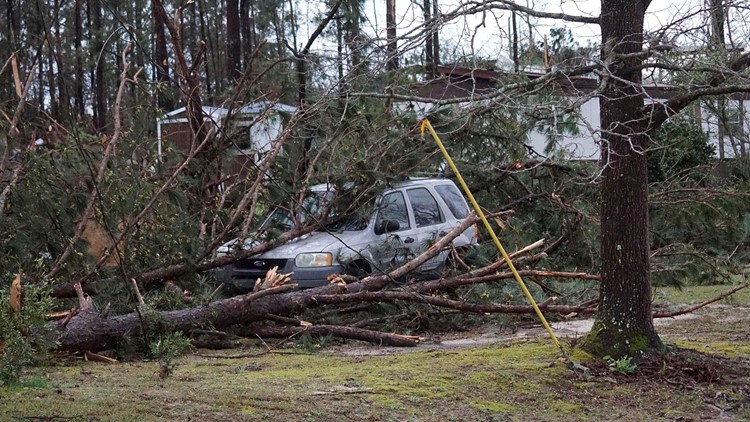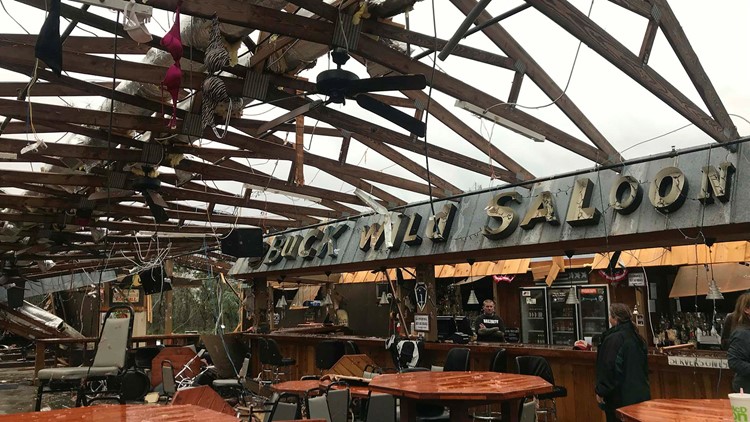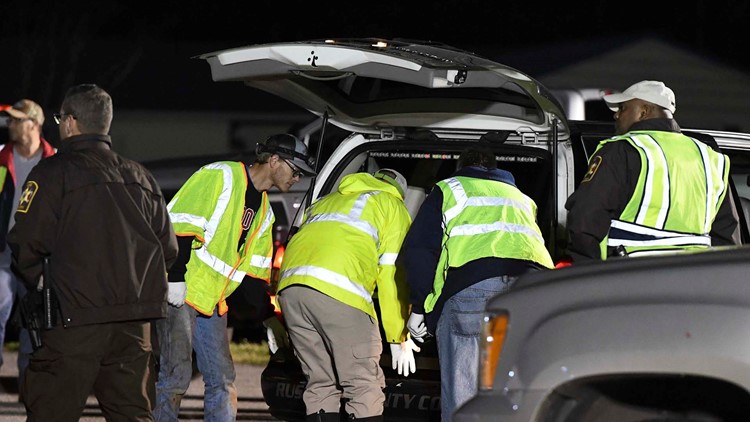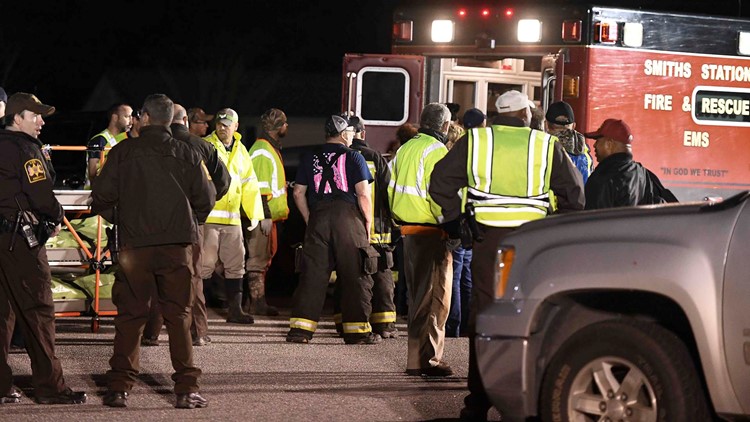Rescue crews using dogs and drones searched for victims amid splintered lumber and twisted metal Monday after the deadliest U.S. tornado in nearly six years ripped through a rural Alabama community. At least 23 people were killed, some of them children.
Dozens were missing in Lee County nearly a day later, according to the sheriff, who said that crews had combed the hardest-hit areas but that the search was far from over.
The winds obliterated numerous homes, leaving huge, jumbled piles of wood and other material. In some cases, homes were reduced to concrete slabs. Debris was scattered across the countryside, with shredded metal hanging from the pine trees.
"I'm not going to be surprised if we don't come up with some more deceased. Hopefully we won't," Coroner Bill Harris said. He said the dead included almost entire families and at least three children, ages 6, 9 and 10.
On the morning after, volunteers used chain saws to clear paths for emergency workers. Neighbors and friends helped one another find some of their belongings in the ruins. And at the R&D Grocery, rattled residents asked each other if they were OK.
"I'm still thanking God I'm among the living," said John Jones, who has lived most of his life in Beauregard, an unincorporated community of roughly 10,000 people about 60 miles east of Montgomery near the Georgia state line.
The National Weather Service said one and possibly two tornadoes struck the area Sunday afternoon, with a powerful EF-4 twister with winds estimated at 170 mph (274 kph) blamed for most of the destruction. It carved a path nearly 1 mile (1.6 kilometers) wide and 24 miles (39 kilometers) long, said meteorologist Chris Darden.
Darden said the "monster tornado" was the single deadliest twister to hit the U.S. since May 2013, when an EF-5 killed 24 people in Moore, Oklahoma.
"It looks like someone almost just took a giant knife and scraped the ground," Sheriff Jay Jones said.
PHOTOS: Deadly Alabama tornado leaves path of destruction
Crews searching door-to-door used dogs as well as drones that can detect heat from a human body. "We're basically using everything we can get our hands on," the sheriff said.
President Donald Trump tweeted that he told the Federal Emergency Management Agency to give Alabama "the A Plus treatment."
The twister was part of a powerful storm system that slashed its way across the Deep South, spawning numerous tornado warnings in Georgia, South Carolina and Florida.
"All we could do is just hold on for life and pray," said Jonathan Clardy, who huddled with his family inside their Beauregard trailer as the tornado ripped the roof off. "It's a blessing from God that me and my young'ns are alive."
Beauregard, named for a Confederate general, is in a corner of the same county that is home to Auburn University. The community has a few small stores, two schools and a volunteer fire department dotting the main highway that runs it.
"Everybody in Beauregard is a real close-knit family," Clardy said. "Everybody knows everybody around here. Everybody is heartbroken."
Julie Morrison and her daughter-in-law picked through the ruins of Morrison's home in Beauregard, looking for keys and a wallet. They managed to salvage her husband's motorcycle boots and a Bible.
Morrison said she and her husband took shelter in the bathtub as the twister lifted their house off the ground and swept it into the woods.
"We knew we were flying because it picked the house up," Morrison said, figuring that the shower's fiberglass enclosure helped them survive. She said her son-in-law later dug them out.
Levi Baker took a chain saw to help clear a path for ambulances and other emergency vehicles. He said he saw dead people and animals and demolished houses, with one home swept off its foundation and left in the middle of a road.
Along one hard-hit country road, giant pieces of metal from a farm building dangled from pine branches 20 feet (6 meters) in the air, making loud creaking sounds as the wind blew. For an entire mile down the road, pines were snapped in half. A mobile home crushed by two trees marked the end of the path of destruction.
An early March tornado outbreak in the Alabama-Mississippi area is not unusual, tornado experts said.
The National Weather Service's Storm Prediction Center in Norman, Oklahoma, posted forecasts for higher tornado activity in the region on Thursday, three days before the killer twister struck.
University of Georgia meteorology professor Marshall Shepherd said the weather service and its prediction center "were all over it" in the days and hours before.
___
Associated Press writers Russ Bynum in Savannah, Georgia; Seth Borenstein in Washington; Bill Cormier in Atlanta; and Ryan Kryska in New York contributed to this report.











